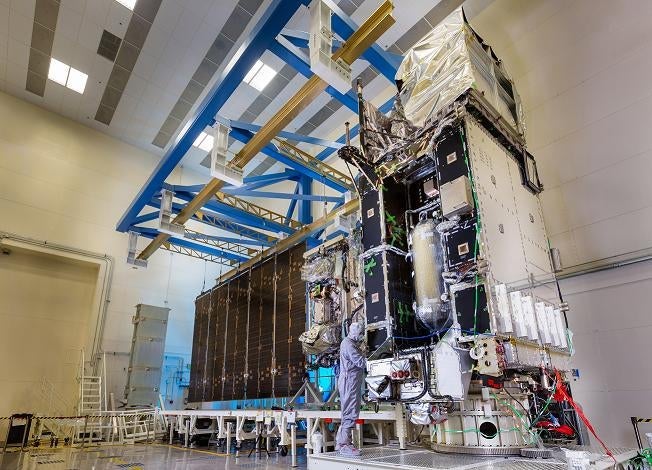
Lockheed Martin has completed assembly of geostationary operational environmental satellite R Series (GOES-R) and is preparing to begin environmental testing.
The National Oceanic and Atmospheric Administration (NOAA) of the US will launch the first of four next-generation geostationary weather satellites in March 2016, aboard an Atlas V from Cape Canaveral Air Force Station, Florida.
GOES-R is designed to enhance the quality of weather data, to monitor conditions over North America through high-resolution images of weather patterns and severe storms.
The spacecraft will also improve hurricane tracking and intensity forecasts, while increasing thunderstorm and tornado warning lead times.
During environmental testing, the satellite and its six instruments will be exposed to launch and the extreme space environment conditions at Lockheed Martin’s facility near Denver, US.
The satellite will complete other tests such as reverberant acoustic, separation and deployment shock, vibration, and electromagnetic interference and compatibility testing.
How well do you really know your competitors?
Access the most comprehensive Company Profiles on the market, powered by GlobalData. Save hours of research. Gain competitive edge.

Thank you!
Your download email will arrive shortly
Not ready to buy yet? Download a free sample
We are confident about the unique quality of our Company Profiles. However, we want you to make the most beneficial decision for your business, so we offer a free sample that you can download by submitting the below form
By GlobalDataLockheed Martin Space Systems vice-president GOES-R Series programme manager Tim Gasparrini said: "NOAA’s GOES satellites are our nation’s weather sentinels and are vital to our severe storm prediction and warnings.
"Now that the first GOES-R Series satellite is complete and environmental testing is underway, we’re one step closer to providing a necessary upgraded capability to NOAA and our nation."
Lockheed Martin was selected by NOAA to build the four GOES-R satellites, as well as the solar ultraviolet imager (SUVI) and the geostationary lightning mapper (GLM) instruments for the spacecraft.
Nasa is responsible for managing acquisition and development of the GOES-R spacecraft and instruments, while NOAA Satellite and Information Service will oversee GOES-R Series operations.
Last month, Harris completed the final two tests on the GOES-R’s ground segment, including 2,100 servers, 149 racks of network equipment, 317 workstations and storage services, totalling three petabytes and 454 blade servers for processing and distributing data.
Image: Engineers and technicians test the deployment of the GOES-R satellite solar array. Photo: courtesy of Lockheed Martin Corporation.


